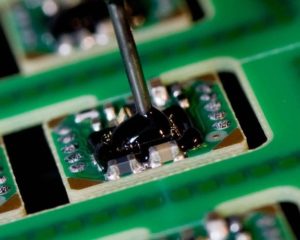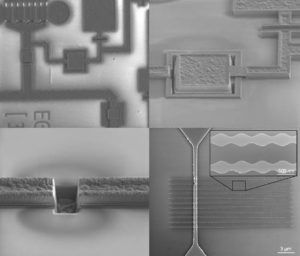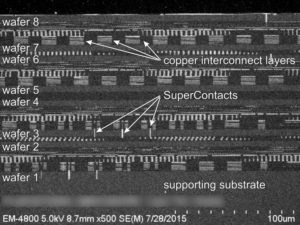Crack MCU AT90S1200 Code
Crack MCU AT90S1200 locked memory, disable the security fuse bit after reverse engineering microcontroller, delayer the Microprocessor to locate the position of fuse bit;

Crack MCU AT90S1200 locked memory, disable the security fuse bit after reverse engineering microcontroller, delayer the Microprocessor to locate the position of fuse bit
The architecture supports high-level languages efficiently as well as extremely dense assembler code programs. The AT90S1200 provides the following features: 1K byte of In-System Programmable Flash, 64 bytes EEPROM, 15 general purpose I/O lines, 32 general purpose working registers, internal and external interrupts, programmable watchdog timer with internal oscillator, an SPI serial port for program downloading and two software selectable power-saving modes when Crack MCU PIC18F8621 Heximal.
The Idle Mode stops the CPU while allowing the Registers, Timer/Counter, Watchdog and Interrupt system to continue functioning. The Power-down mode saves the register contents but freezes the Oscillator, disabling all other chip functions until the next External Interrupt or hardware Reset.
The device is manufactured using Atmel’s high-density nonvolatile memory technology. The On-chip In-System Programmable Flash allows the program memory to be reprogrammed in-system through an SPI serial interface or by a conventional nonvolatile memory programmer before Crack chip PIC18F6622 program.
By combining an enhanced RISC 8-bit CPU with In-System Programmable Flash on a monolithic chip, the Atmel AT90S1200 is a powerful microcontroller that provides a highly flexible and cost-effective solution to many embedded control applications. The AT90S1200 AVR is supported with a full suite of program and system development tools including: macro assemblers, program debugger/simulators, in-circuit emulators, and evaluation kits after Microcontroller PIC18F6627 code extraction.
Port B is an 8-bit bi-directional I/O port. Port pins can provide internal pull-up resistors (selected for each bit). PB0 and PB1 also serve as the positive input (AIN0) and the negative input (AIN1), respectively, of the On-chip Analog Comparator. The Port B output buffers can sink 20 mA and thus drive LED displays directly.
When pins PB0 to PB7 are used as inputs and are externally pulled low, they will source current if the internal pull-up resistors are activated. The Port B pins are tri-stated when a reset condition becomes active, even if the clock is not active. Port B also serves the functions of various special features of the AT90S1200 as listed on page 30.
Port D has seven bi-directional I/O pins with internal pull-up resistors, PD6..PD0. The Port D output buffers can sink 20 mA. As inputs, Port D pins that are externally pulled low will source current if the pull-up resistors are activated. The Port D pins are tri-stated when a reset condition becomes active, even if the clock is not active.
The ALU supports arithmetic and logic functions between registers or between a constant and a register. Single register operations are also executed in the ALU. Figure 4 shows the AT90S1200 AVR RISC microcontroller architecture. The AVR uses a Harvard architecture concept – with separate memories and buses for program and data memories.
The program memory is accessed with a 2-stage pipeline. While one instruction is being executed, the next instruction is pre-fetched from the program memory. This concept enables instructions to be executed in every clock cycle. The program memory is In-System Programmable Flash memory. With the relative jump and relative call instructions, the whole 512 address space is directly accessed. All AVR instructions have a single 16-bit word format, meaning that every program memory address contains a single 16-bit instruction.
Tags: crack mcu encrypted archive,crack mcu encrypted code,crack mcu encrypted content,crack mcu encrypted data,crack mcu encrypted eeprom,crack mcu encrypted file,crack mcu encrypted firmware,crack mcu encrypted information,crack mcu encrypted memory,crack mcu encrypted program







